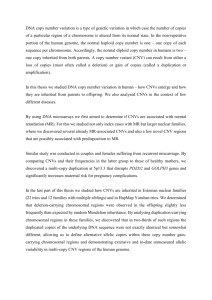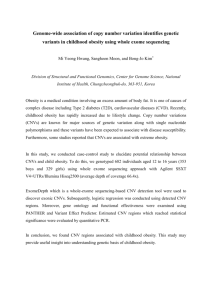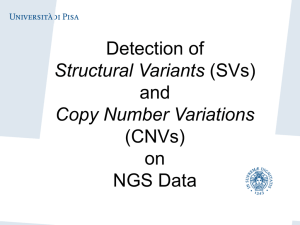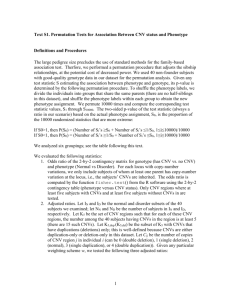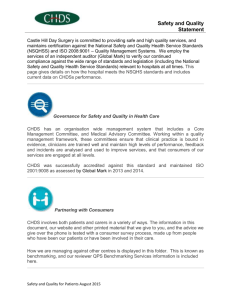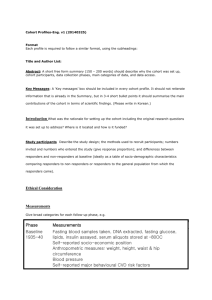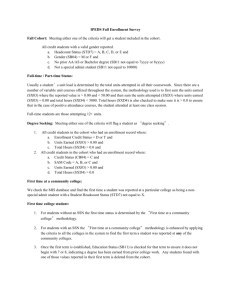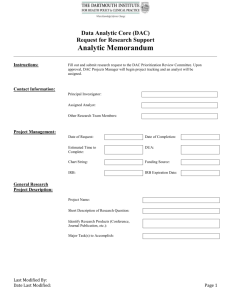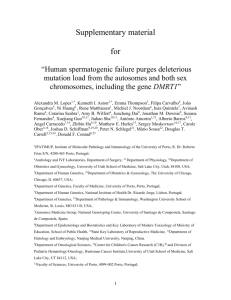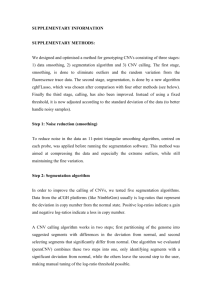CNVs as Modifiers of the Cardiovascular Phenotype in 22q11.2
advertisement
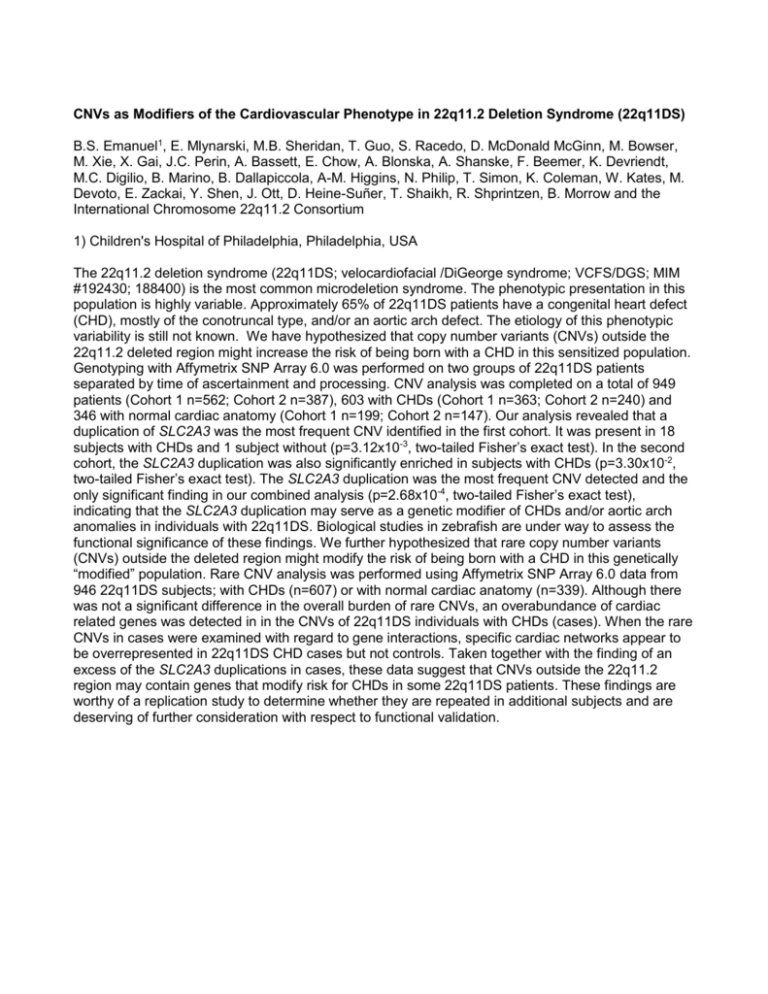
CNVs as Modifiers of the Cardiovascular Phenotype in 22q11.2 Deletion Syndrome (22q11DS) B.S. Emanuel1, E. Mlynarski, M.B. Sheridan, T. Guo, S. Racedo, D. McDonald McGinn, M. Bowser, M. Xie, X. Gai, J.C. Perin, A. Bassett, E. Chow, A. Blonska, A. Shanske, F. Beemer, K. Devriendt, M.C. Digilio, B. Marino, B. Dallapiccola, A-M. Higgins, N. Philip, T. Simon, K. Coleman, W. Kates, M. Devoto, E. Zackai, Y. Shen, J. Ott, D. Heine-Suñer, T. Shaikh, R. Shprintzen, B. Morrow and the International Chromosome 22q11.2 Consortium 1) Children's Hospital of Philadelphia, Philadelphia, USA The 22q11.2 deletion syndrome (22q11DS; velocardiofacial /DiGeorge syndrome; VCFS/DGS; MIM #192430; 188400) is the most common microdeletion syndrome. The phenotypic presentation in this population is highly variable. Approximately 65% of 22q11DS patients have a congenital heart defect (CHD), mostly of the conotruncal type, and/or an aortic arch defect. The etiology of this phenotypic variability is still not known. We have hypothesized that copy number variants (CNVs) outside the 22q11.2 deleted region might increase the risk of being born with a CHD in this sensitized population. Genotyping with Affymetrix SNP Array 6.0 was performed on two groups of 22q11DS patients separated by time of ascertainment and processing. CNV analysis was completed on a total of 949 patients (Cohort 1 n=562; Cohort 2 n=387), 603 with CHDs (Cohort 1 n=363; Cohort 2 n=240) and 346 with normal cardiac anatomy (Cohort 1 n=199; Cohort 2 n=147). Our analysis revealed that a duplication of SLC2A3 was the most frequent CNV identified in the first cohort. It was present in 18 subjects with CHDs and 1 subject without (p=3.12x10-3, two-tailed Fisher’s exact test). In the second cohort, the SLC2A3 duplication was also significantly enriched in subjects with CHDs (p=3.30x10-2, two-tailed Fisher’s exact test). The SLC2A3 duplication was the most frequent CNV detected and the only significant finding in our combined analysis (p=2.68x10-4, two-tailed Fisher’s exact test), indicating that the SLC2A3 duplication may serve as a genetic modifier of CHDs and/or aortic arch anomalies in individuals with 22q11DS. Biological studies in zebrafish are under way to assess the functional significance of these findings. We further hypothesized that rare copy number variants (CNVs) outside the deleted region might modify the risk of being born with a CHD in this genetically “modified” population. Rare CNV analysis was performed using Affymetrix SNP Array 6.0 data from 946 22q11DS subjects; with CHDs (n=607) or with normal cardiac anatomy (n=339). Although there was not a significant difference in the overall burden of rare CNVs, an overabundance of cardiac related genes was detected in in the CNVs of 22q11DS individuals with CHDs (cases). When the rare CNVs in cases were examined with regard to gene interactions, specific cardiac networks appear to be overrepresented in 22q11DS CHD cases but not controls. Taken together with the finding of an excess of the SLC2A3 duplications in cases, these data suggest that CNVs outside the 22q11.2 region may contain genes that modify risk for CHDs in some 22q11DS patients. These findings are worthy of a replication study to determine whether they are repeated in additional subjects and are deserving of further consideration with respect to functional validation.
